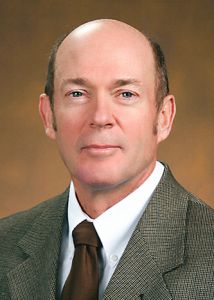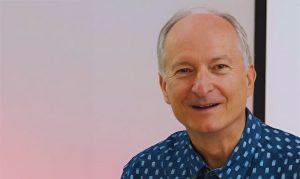by Dr. Gary Scott Smith

Few can name which groups the Godspeed and the Arabella brought to America. They were the Jamestown colonists in 1607 and the Puritans to Massachusetts Bay Colony in 1630, respectively.
But the Mayflower, which brought the Pilgrims to Plymouth in 1620, has sailed into history and ranks with the Titanic, the Lusitania, the Bismarck, and the Queen Mary as the world’s most famous ships. What accounts for the Mayflower’s mystique?
As many promote a cancel culture, with numerous monuments honoring prominent leaders and historical events being torn down, and a ferocious debate raging over slavery, racism, and American exceptionalism, discussing the 400th anniversary of the initial landing of the Mayflower is a daunting task.
Nevertheless, this event deserves to be carefully examined. The Pilgrims are best known for their zeal to worship God as their consciences directed, for the celebration they shared with the Wampanoag in 1621 to thank God for their successful harvest, and for the underwhelming rock in Plymouth, Massachusetts, commemorating their arrival.
More recently, the Pilgrims have been lambasted for their religious intolerance and for stealing Native American lands and killing or enslaving Indians who resisted.
As is often the case, the history of the Pilgrims is more complicated than such assessments suggest, and reality must be separated from myths. As John Turner argues in “They Knew They Were Pilgrims: Plymouth Colony and the Contest for American Liberty” (2020), the history of Plymouth is far from simple.
The Puritans arose in the 1570s in England. These Reformed (Calvinist) Protestants wanted to purify the Church of England, which, they contended, was still too Catholic in its theology, worship, and polity. They sought to reform the Anglican Church from within rather than create another denomination.
In 1606, however, a group of Puritans in Nottinghamshire, England, did found a church that was separate from the state-sanctioned Church of England. Persecution in England prompted these dissidents to move to the more religiously tolerant Netherlands where they struggled for 12 years to earn a living in Leiden. Seeking other alternatives, these Puritans secured the financial support of London merchants to establish a colony in the New World.
On September 6, 1620, 102 of them sailed for America. Based on Hebrews 11:13, William Bradford, their second governor, dubbed them Pilgrims; the 1587 Geneva Bible referred to Old Testament believers who lived by their faith in God’s promises as pilgrims and strangers. Their 66-day voyage across the Atlantic was arduous; one passenger died, and one baby was born.
The Pilgrims had intended to establish a settlement near the Hudson River in present-day New York, but treacherous shoals and weak winds forced the Mayflower to anchor instead at what became Provincetown Harbor at the tip of Cape Cod.
Before disembarking, 41 male passengers signed the Mayflower Compact, declaring that they had migrated to the New World to promote “the Glory of God” and advance “the Christian Faith.” They covenanted to create “a Civil Body Politic” to help accomplish these goals and to frame “just and equal Laws.”
Describing the Pilgrims’ arrival, Bradford wrote in his “History of Plymouth Plantation”: “Being thus arrived in a good harbor and brought safe to land, they fell upon their knees & blessed ye God of heaven, who had brought them over ye vast & furious ocean, and delivered them from all ye perils & miseries thereof.”
When Massachusetts Bay and Plymouth merged in 1691 to become Massachusetts colony, Plymouth had only 7,500 residents and had not sent a single person to college. Established 10 years later, Massachusetts Bay Colony, by contrast, had founded Harvard College in 1636, had developed an impressive system of primary education, and had almost 50,000 residents. Plymouth has been called “the smallest, weakest, and least important of the English colonies.”
So why are the Pilgrims and Plymouth important? Turner stresses that the Pilgrims are significant because they created a church that permitted laypeople to elect their own officers and exercise discipline over one another and devised a political framework with a substantial amount of (albeit male only) participation.
The Pilgrims are known, however, primarily for the large role they have played in subsequent American history; they have been frequently used to reimagine and reinvent the nation’s history. During the early national and antebellum eras, ministers, scholars, and politicians often extolled the Pilgrims. Yale president Timothy Dwight, historian George Bancroft, and President John Quincy Adams, for example, saw direct connections between the Mayflower Compact and the Declaration of Independence and portrayed the Pilgrims as progenitors of democracy.
This portrait of the Pilgrims as the forerunners of republicanism reached a peak in the sermons and orations celebrating the 200th anniversary of the Mayflower’s voyage in 1820. Former congressman and future senator Daniel Webster helped propel the Pilgrims from regional to national repute in one of his speeches.
Webster, as Cory Higdon explains, insisted that the Pilgrims possessed the qualities and characteristics the American experiment required to succeed and he employed their history to thwart efforts to spread slavery. Plymouth rested on a moral framework, Webster asserted, which, in turn, was based on residents’ religious piety and devotion to God.
As Americans celebrated the 300th anniversary of the Mayflower’s arrival, many Americans used the Pilgrims’ story to assist in their struggle against Bolshevism. Senator Bert Fernald of Maine, for example, claimed that “the raging storm of Bolshevism” currently sweeping the world could not uproot “the foundation of the American Republic as laid in the firm cement” of the Mayflower Compact.
The Pilgrims were not the forefathers of abolitionism; they enslaved Native Americans. Nor were they thoroughgoing proponents of liberty; religious dissenters were second-class citizens in Plymouth. Nevertheless, their “complicated legacy of human bondage and unresolved debates about liberty,” as Turner puts it, as well as their quest to obtain religious freedom, need to be remembered as we celebrate the 400th anniversary of their arrival.
[Gary Scott Smith is Professor of History Emeritus at Grove City (Penn.) College and is a fellow for faith and politics with the Institute for Faith and Freedom. He is the author of “Duty and Destiny: The Life and Faith of Winston Churchill” (January 2021), “A History of Christianity in Pittsburgh” (2019), “Suffer the Children” (2017), “Religion in the Oval Office” (Oxford University Press, 2015), “Faith and the Presidency From George Washington to George W. Bush” (Oxford University Press, 2009), “Religion in the Oval Office” and “Heaven in the American Imagination” (Oxford University Press, 2011).]












Leave a Comment
You must be logged in to post a comment.